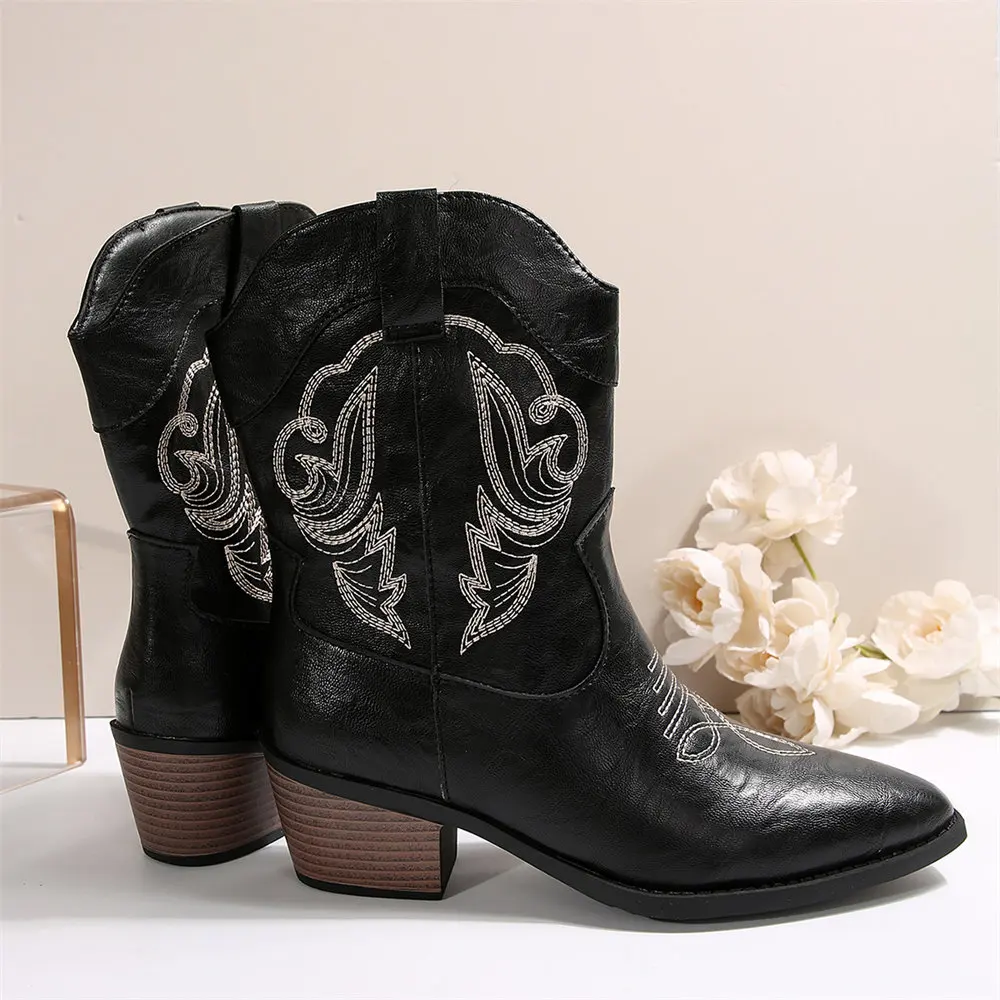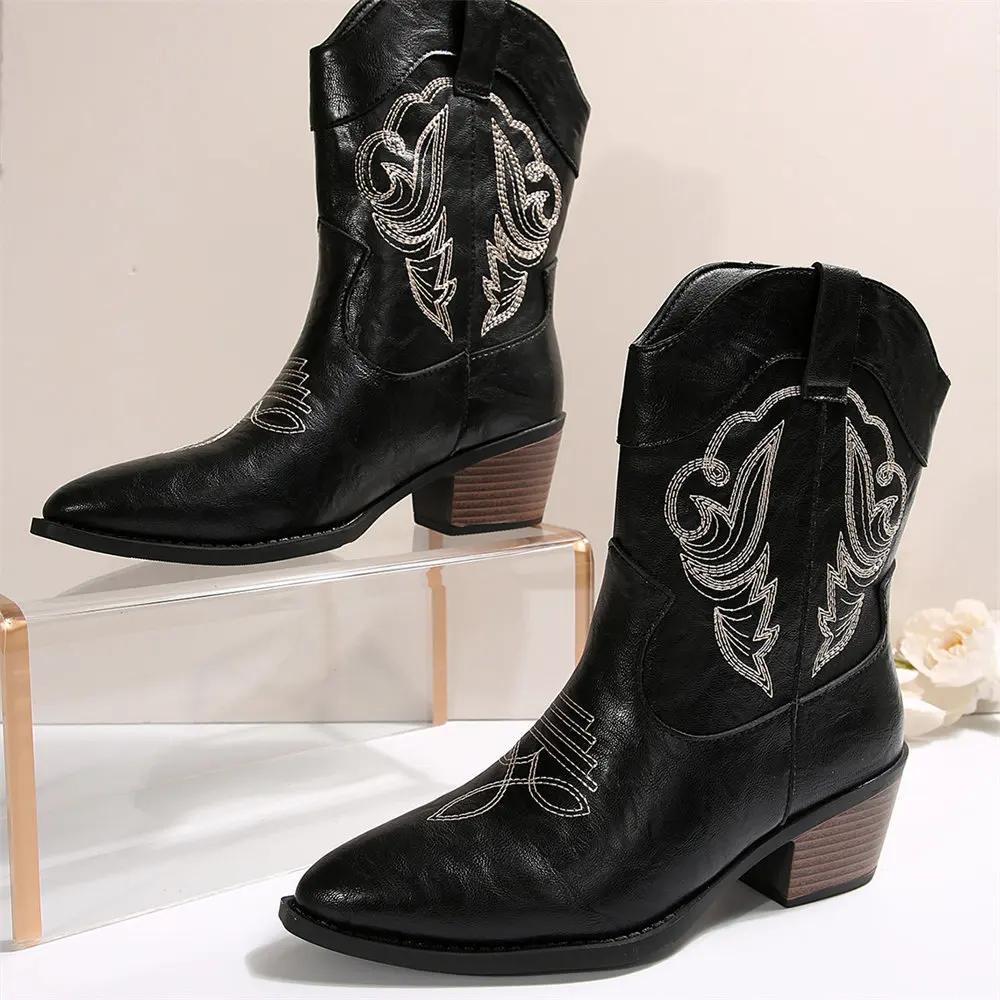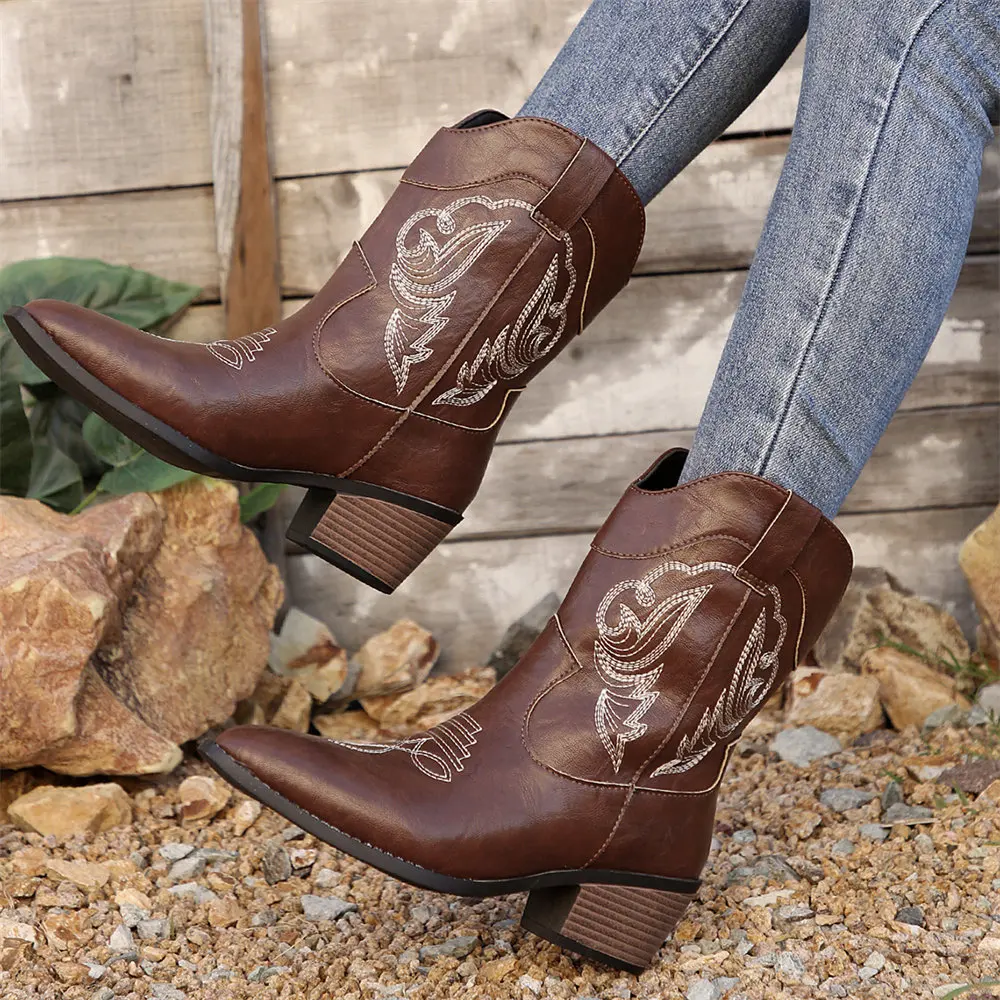Introduction
Cowboy boots are iconic symbols of Western culture, known for their unique style and durability. However, beyond their visual appeal, achieving the right fit is crucial for comfort and functionality. This guide explores how are cowboy boots supposed to fit, focusing on their various components, measuring techniques, and tips for ensuring comfort.

Understanding the Anatomy of Cowboy Boots
Key Components of Cowboy Boots
To understand how cowboy boots should fit, it’s essential to know their key components. Each part of the boot plays a role in how well it fits and feels. The main components include the toe box, instep, heel, shaft, and outsole. Each element contributes to the overall fit and comfort of the boot.
Toe Box: The toe box is the front part of the boot where your toes are located. It should be spacious enough to allow your toes to move comfortably. If the toe box is too narrow, your toes will be cramped, causing discomfort. Conversely, a toe box that’s too wide might make your feet slide inside the boot, leading to instability.
Instep: The instep is the area covering the top of your foot. A well-fitting instep should be snug but not too tight. It ensures that the boot stays securely in place without pinching or restricting movement. If the instep is too tight, it can cause pain and limit flexibility. If it’s too loose, the boot might slip off.
Heel: The heel of a cowboy boot is the raised part at the back. It usually ranges from 1 to 2 inches in height. A proper heel fit should be snug around your heel to prevent excessive slipping. If the heel slips too much, it can lead to blisters and discomfort. A heel that is too tight can create pressure points.
Shaft: The shaft is the upper part of the boot that extends up your leg. It should fit comfortably around your calf. The shaft should neither be too tight nor too loose. A tight shaft can restrict movement, while a loose shaft can cause the boot to shift and feel unstable.
Outsole: The outsole is the bottom part of the boot that contacts the ground. It should provide good traction and support. While the fit of the outsole is less about size and more about support, it’s essential that it provides stability for your activities.
Understanding these components helps you assess how well the boot fits. Each part must work together to ensure comfort and functionality.

How Each Component Affects Fit
Each part of a cowboy boot affects its overall fit. Here’s a closer look at how each component impacts comfort and function.
Toe Box: The toe box should allow enough room for your toes to move naturally. If it’s too tight, it can cause pain and blisters. On the other hand, if it’s too loose, your toes might slide, causing instability. The right amount of space is crucial for comfort and to prevent foot problems.
Instep: The instep area should fit snugly without pinching. This ensures the boot stays on your foot and moves with you. A tight instep can limit movement and cause discomfort, while a loose instep might result in the boot slipping off.
Heel: The heel fit is critical for stability. It should hug your heel snugly to prevent excessive movement. If the heel slips, it can cause friction and blisters. A heel that’s too tight can create pressure points and discomfort.
Shaft: The shaft of the boot should fit comfortably around your calf. It should provide support without being too restrictive. If the shaft is too tight, it can cause discomfort and restrict movement. If it’s too loose, the boot may shift, leading to instability.
Outsole: The outsole should offer good traction and support. It’s important for preventing slips and providing stability during activities. If the outsole is worn out or damaged, it can affect the overall fit and performance of the boot.
By understanding how each component affects the fit, you can make more informed decisions when selecting cowboy boots.
Measuring for the Right Size
Accurate Foot Measurement
The first step in finding the perfect cowboy boot fit is accurate foot measurement. Proper measurements help ensure you choose the right size and avoid discomfort. Here’s how to measure your feet correctly:
- Prepare Your Feet: Measure your feet at the end of the day when they are at their largest. Wear the type of socks you plan to use with the boots. This is important because the fit can change with different sock thicknesses.
- Use a Ruler or Measuring Tape: Place a ruler or measuring tape on a flat surface. Stand with your heel against the wall and measure from the heel to the tip of your longest toe. This gives you the length of your foot.
- Measure Width: Measure the width of your foot at its widest point. This is typically across the ball of your foot. It’s important to measure both feet, as one foot might be larger than the other.
- Consult Size Charts: Once you have your measurements, compare them with the size chart provided by the boot manufacturer. Sizes can vary between brands, so always refer to their specific chart.
- Consider Foot Shape: Think about the shape of your foot. Some people have high arches or wide insteps, which might need special consideration when choosing boots.
Accurate measurements are crucial for finding the right fit. If you’re unsure about your measurements, seek help from a professional who can provide accurate sizing.
Trying on Cowboy Boots
Once you have your measurements, the next step is to try on cowboy boots. Here’s how to evaluate the fit when trying them on:
- Check Toe Box Fit: Put on the boots and walk around to see how the toe box feels. You should have enough room to wiggle your toes without feeling cramped. There should be a small gap between your toes and the end of the boot.
- Assess Instep Fit: Ensure the instep fits comfortably. The boots should stay in place as you walk. Pay attention to any tightness or discomfort in this area.
- Evaluate Heel Fit: Check how the heel fits. It should be snug without slipping excessively. Walk around to see if the heel moves or causes friction.
- Examine Shaft Fit: The shaft should fit comfortably around your calf. It shouldn’t be too tight or too loose. You should be able to slide a finger between the boot and your leg.
- Test for Comfort: Walk around and move in the boots to check overall comfort. Look for any pressure points or areas that feel uncomfortable.
Trying on the boots is essential for assessing fit. If they feel uncomfortable or don’t fit properly, try a different size or style.

Tips for Ensuring a Comfortable Fit
Breaking in Your Cowboy Boots
Even after finding the right size, cowboy boots may need a breaking-in period to achieve maximum comfort. The materials, especially leather, may need time to mold to your feet. Here’s how to break in your boots effectively:
- Wear Them Gradually: Start by wearing your boots for short periods. Gradually increase the time you wear them. This helps the boots conform to your feet without causing excessive discomfort.
- Use Boot Stretchers: If the boots are too tight, consider using a boot stretcher. Insert it into the boots and adjust it to widen the fit. Leave it in place overnight for the best results.
- Apply Leather Conditioner: Leather conditioner can help soften the leather, making it more flexible. Apply a small amount to the boots and rub it in. This can reduce stiffness and enhance comfort.
- Wear Thick Socks: Wearing thick socks while breaking in your boots can provide extra cushioning. This can help reduce friction and prevent blisters.
- Avoid Excess Moisture: Keep your boots dry during the breaking-in process. Moisture can cause uneven stretching and affect the fit. If your boots get wet, let them dry naturally away from direct heat.
Breaking in your cowboy boots properly will help them mold to your feet, making them more comfortable. Be patient, as this process can take time.
Choosing the Right Socks
The type of socks you wear with cowboy boots can significantly impact the fit and comfort. Choosing the right socks is crucial for a pleasant wearing experience. Here’s how to select the best socks for your boots:
- Opt for Moisture-Wicking Socks: Moisture-wicking socks draw moisture away from your feet, keeping them dry. This helps prevent blisters and fungal infections.
- Choose the Right Thickness: The thickness of your socks should match the fit of the boots. For a snug fit, use thinner socks. For a looser fit, opt for thicker socks for added cushioning.
- Ensure Proper Fit: Socks should fit well without bunching or sliding inside the boots. Avoid socks that are too tight or too loose, as they can affect comfort.
- Consider Material: Choose socks made from breathable materials like cotton or wool. These materials provide comfort and help regulate temperature.
- Avoid Seams: Seams can create pressure points and discomfort. Opt for seamless or flat-seamed socks for a more comfortable fit.
The right socks can enhance the fit and comfort of your cowboy boots. Experiment with different types to find what works best for you.
Conclusion
Finding the perfect fit for cowboy boots involves understanding their anatomy, accurately measuring your feet, and trying on different sizes and styles. Each component of the boot plays a role in how it fits and feels. Properly breaking in the boots and choosing the right socks are also essential for achieving maximum comfort. By following these guidelines, you can ensure that your cowboy boots fit well and provide the comfort and functionality you need.
